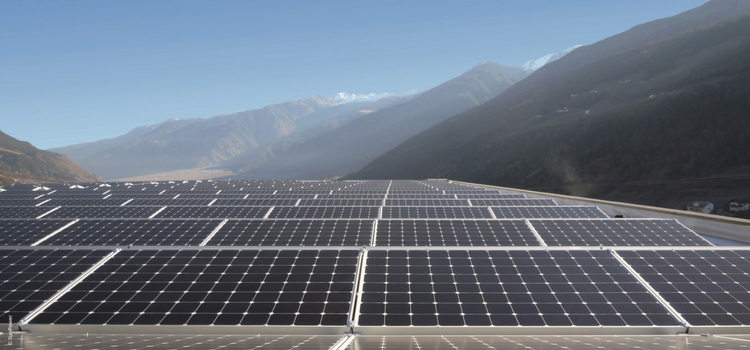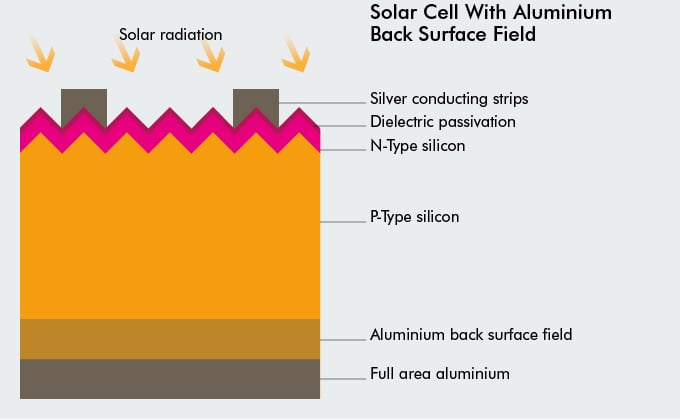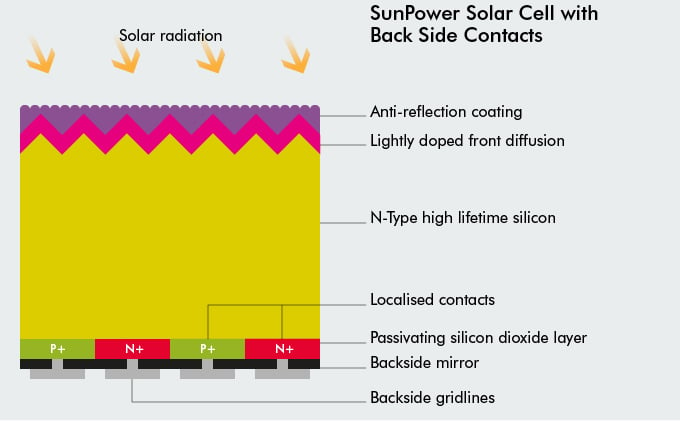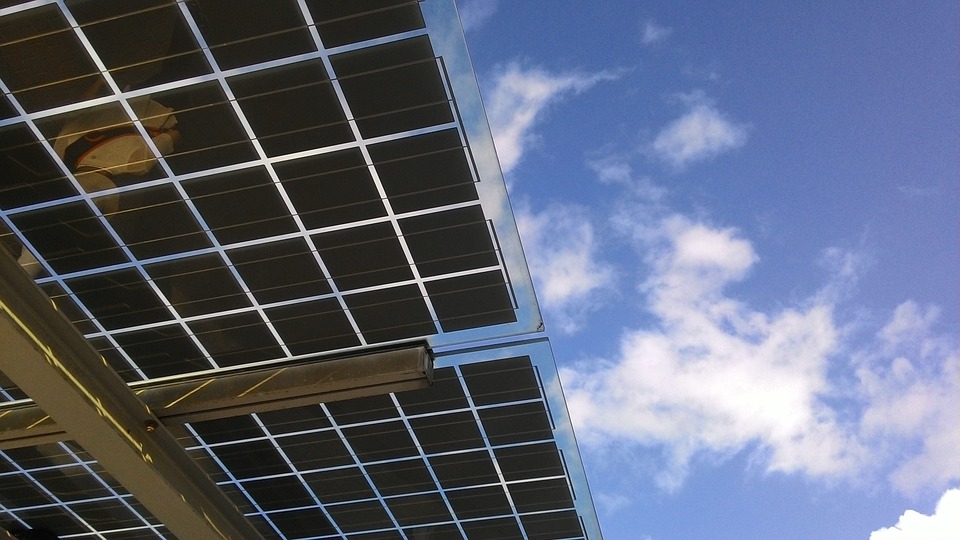
A standard solar panel has an efficiency in the range of 12-17%. In terms of commercially available products, a high efficiency panel is one that is 20-25% efficient (solar tracking, research or theoretical cells can be even higher, though not necessarily as financially viable). Lower efficiency panels are thin film or polycrystalline, while higher efficiencies are achieved by monocrystalline cells.
High efficiency solar modules can be vital for getting the most power out of smaller roof spaces, or to allow room for extending a system when more power may be required in the future - for example, if investing in an electric car.
Solar cells can be made from a number of semi-conducting materials. A semi-conducting material is one that has a limited capacity for conducting an electrical current and those used in solar cells are all uniquely suited to producing electricity from sunlight – the photovoltaic effect.
By far the most commonly used material is silicon, which is the main component of quartz sand and, after oxygen, is the second most common element in the Earth’s crust.
Crystalline silicon panels make up 80-90% of the solar panel market and have dominated the market since the 1950s. Panels are either multi-crystalline (polycrystalline) or monocrystalline.
The performance of a solar cell is measured in terms of its efficiency at turning solar radiation or ‘sunlight’ into electricity. A typical solar cell has an efficiency no greater than 12-17% as only a portion of the sunlight energy spectrum can be converted into electricity and much of the sunlight is reflected or absorbed by the materials that make up the cell. If this seems off-putting bear in mind that a coal power station has an energy conversion efficiency of up to 40% and that a further 7% of the electricity generated is lost during the long distance transmission to the consumers – you and I.
Here is an overview as to the properties of the types of commercial solar cell available today.
|
Type of cell |
Panel efficiency |
Output per m2* |
Comments |
|
Polycrystalline |
15% - 17% |
168W |
Most commonly used type of cell, offering reasonable efficiency at the lowest cost. |
|
Monocrystalline (PERC) |
16%-20% |
195W |
Around 15% more output per square metre than polycrystalline cells. Typically increases cost of installation by 10% relative to polycrystalline, so likely to make economic sense. |
|
Monocrystalline (PERC) bifacial |
16% - 20% plus up to 30% uplift |
190W plus uplift |
As for Monocrystalline (PERC) standard panels, but these panels have the potential to generate additional electricity (up to 30% more) from the back face of the panel. This obviously depends on radiation hitting the back face of the panel (e.g. by reflection). |
|
Monocrystalline back contact |
up to 23% |
226W |
Sunpower panels use patented Maxeon back contact technology which offers the best performance on the market. See above for more information. |
|
Thin Film / Amorphous |
12-14% |
138W |
Low efficiency requires large surface area. Made from flexible material and so can be used on curved building surfaces. Works better in diffuse light than mono & polycrystalline. |
*Standard conditions: Irradiance 1000W/m², Module Temperature 25°C, AM=1.5; NOCT = open-circuit module operation temperature at 800W/m2 irradiance, 20°C ambient temperature, 1m/s wind speed.
Until a few years ago (around 2013), most solar cells were designed with an aluminium back surface field (Al-BSF), at the bottom, as in the following diagram:

More recently, the passivated emitted rear contact (PERC) structure has developed, as per this diagram:
_LOW.jpg?width=680&name=Solar_Cell_(PERC)_LOW.jpg)
The main difference is at the rear where the full area aluminium alloyed back contact (Al-BSF) is replaced by a dielectric passivation layer (SiO2, SiN2, Al2O3), a dielectrically displaced mirror, and local aluminium alloyed contacts. The purpose of this is to reduce surface recombination of photogenerated electron-hole pairs at the rear surface. This in turn boosts open circuit voltage and efficiency. The mirror results in an increase in the rear internal reflection for near bandgap photons, which increases the short circuit current density of the solar cell
Essentially, PERC architecture leads to better light capture near the rear surface and optimisation of electron capture.
As can be seen in the table above, PERC improves efficiency by a reasonable percentage. It also improves cost.
Variations on PERC include PERL (passivated emitter rear locally diffused), which achieved the landmark 25% energy conversion efficiency in 1999.
The PERC solar cell is predicted to become the dominant solar cell in the industry in the next few years.
As discussed in our How Solar Works guide, a solar cell is basically fabricated by forming P-type regions and N-type regions in a silicon substrate. Each adjacent P-type region and N-type region forms a PN junction. Solar radiation hitting the solar cell causes electrons and holes to migrate to the P-type and N-type regions, thereby creating voltage differentials across the PN junctions.
In a backside contact solar cell, the P-type and N-type regions are coupled to metal contacts on the backside of the solar cell to allow an external electrical circuit or device to be coupled to and be powered by the solar cell.
This type of cell was invented and has been patented by SunPower. N-type silicon forms the basis of the wafer. High lifetime N-type silicon forms the basis of the wafer. A backside mirror traps light and reduces back light absorption. Recombination losses are reduced by the lightly doped front layer and the passivating silicon dioxide layer.

One of the latest PV trends is bifacial modules - these are where the solar cells are exposed on both the front and back of the panel. In ground-mount or carport style installations, light reflected off the ground is picked up by the reverse side of the panel, generating extra power.
Some manufacturers are claiming an uplift of up to 30% (we’re assuming this is for utility scale solar farms with tracking systems). Nevertheless, depending on the reflectiveness of the ground surface - white pebbles are much better than grass for instance - efficiency on a typical installation can easily be increased by up to 8%.

A traditional solar cell has a single p-n junction made from one semiconductor material. In a multijunction solar cell, multiple p-n junctions are made from different semiconductor materials, which each respond to different wavelengths of light. By absorbing a broader range of wavelengths, the cell can produce more electricity from the same input of sunlight. Theoretically, an infinite number of junctions could reach an efficiency of around 87% (compared to a single junction theoretical limit of 34%), but practical limits reached are around 30%.
Concentrated photovoltaic (CPV) systems use curved mirrors and lenses to intensify the light hitting multijunction solar cells. This relies on focusing the sun’s rays at the correct angle, so solar trackers are used to tilt the panels throughout the day. Additionally cooling systems can further increase efficiency, boosting the overall efficiency to upwards of 41%. Due to the additional mechanics and maintenance, these types of cells being developed would be suited to utility solar farms.
At Spirit, there are a number of higher efficiency panels on the market that we can install in residential or commercial properties. We usually recommend these when space is limited, to maximise generation from the available area.
SunPower leads the way in high-performance PV and has created the most efficient commercially available panel at 22.6%.
LG produces panels with a top efficiency of 22.0%, though these are larger than SunPower panels.
Panasonic manufactures monocrystalline panels with efficiencies up to 20.3%.
Get in touch with us today for a free recommendation on which panels will provide the best efficiency for your home.
Copyright © Spirit Energy 2025 · info@spiritenergy.co.uk · 0118 951 4490
Jobs and Careers
Interested in joining the Spirit team? Email jobs@spiritenergy.co.uk
Spirit House, 25 Albury Close, Reading, RG30 1BD
(Location formerly known as 44 Portman Road, Reading, RG30 1EA)
Spirit Energy is the trading name of Spirit Solar Ltd · UK Company Number 07138647
Although care is taken to ensure that the information on our website (www.spiritenergy.co.uk) and any guides, calculators or checklists provided by us, electronically or otherwise, are accurate and up-to-date, we cannot accept any responsibility for mistakes or omissions. We enter into no express or implied conditions, warranties, terms or representations regarding the quality, accuracy or completeness of the information. We exclude to the extent lawfully permitted all liability for loss or damage, whether direct, indirect or consequential arising out of your use of our website or any guides, calculators or checklists provided by us, or from any information or omission contained in our website or any guides, calculators or checklists provided by us.